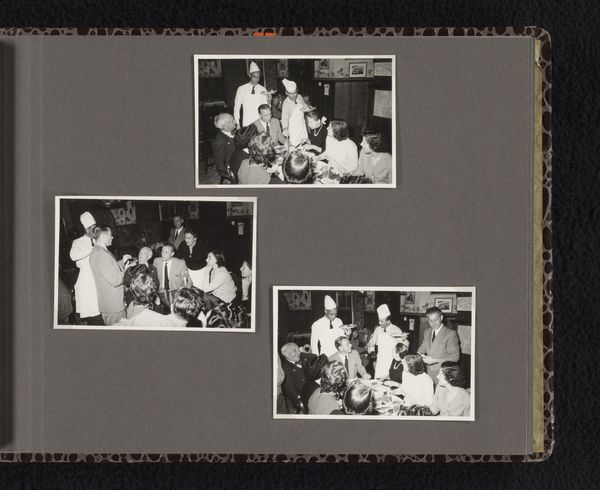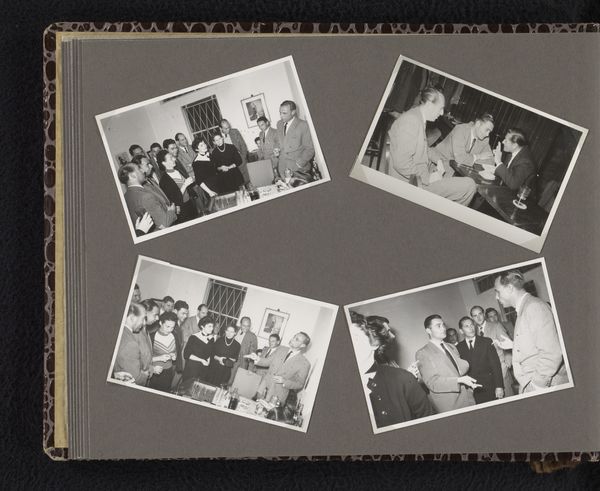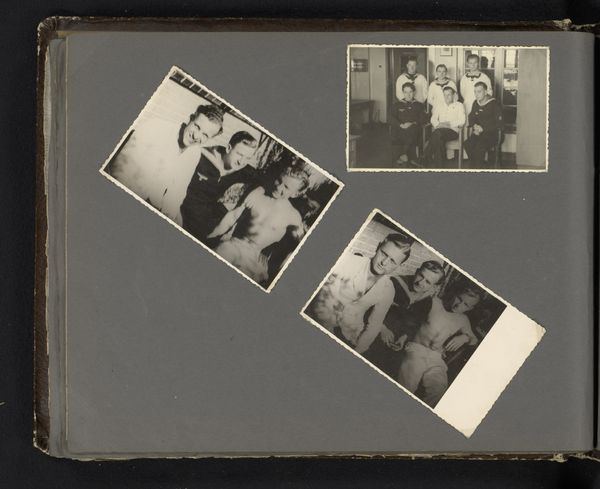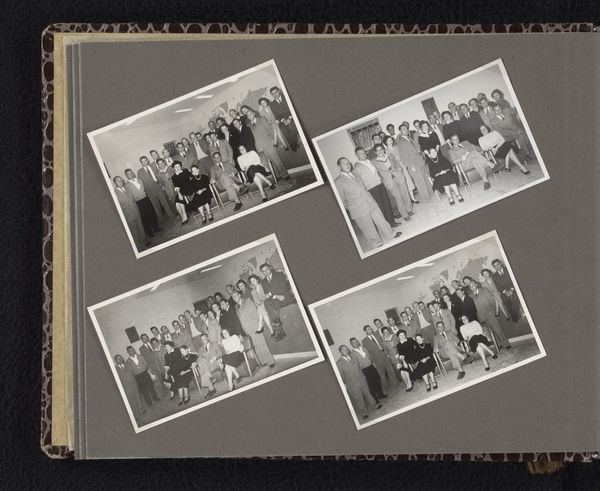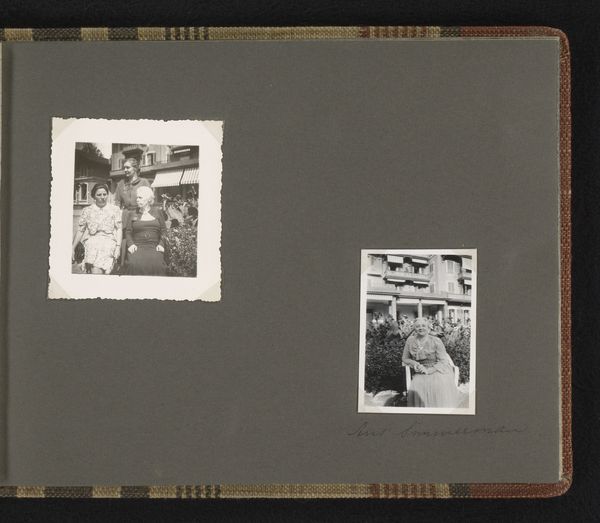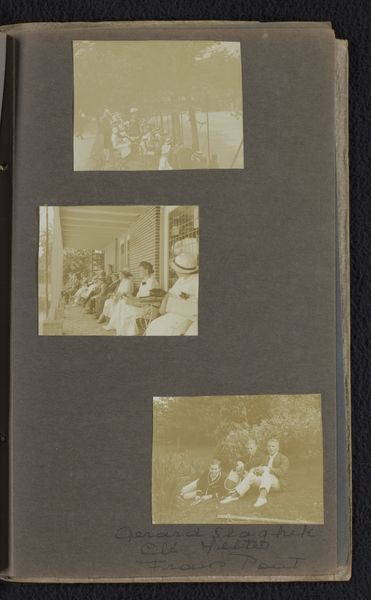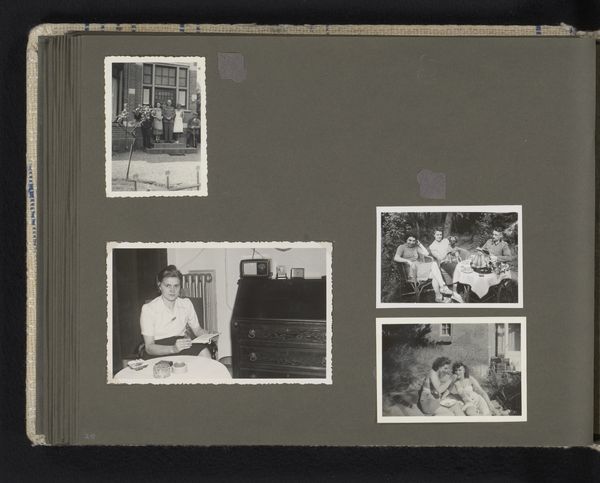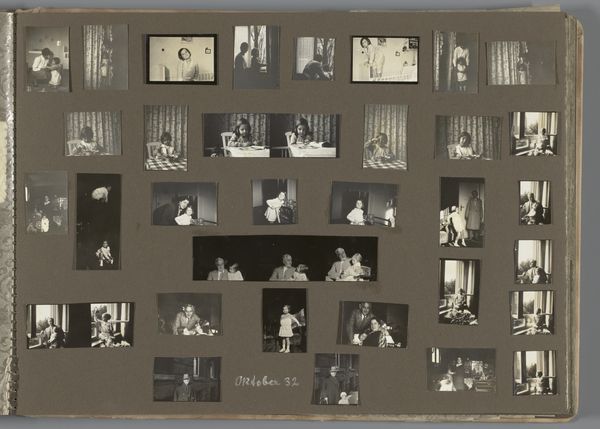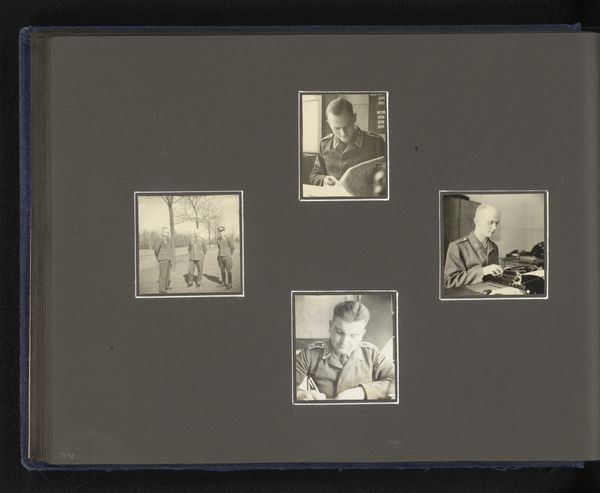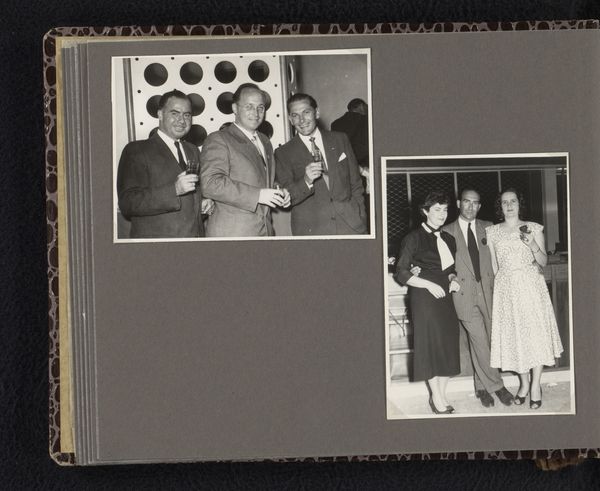
Isabel Wachenheimer tijdens een etentje met onbekende collega's van Isabel tijdens haar periode bij KLM, 1955, Israël Possibly 1955
0:00
0:00
Dimensions: height 60 mm, width 90 mm, height 190 mm, width 250 mm
Copyright: Rijks Museum: Open Domain
Editor: Here we have a photograph collage from possibly 1955, titled "Isabel Wachenheimer tijdens een etentje met onbekende collega's van Isabel tijdens haar periode bij KLM, 1955, Israël.” It shows several black and white photos arranged in a scrapbook. The contrasting rectangular forms against the darker scrapbook pages create an interesting pattern. What jumps out at you compositionally? Curator: The interplay between the photographs' content and their arrangement strikes me. Observe how the differing orientations—some are diagonal—disrupt the predictable grid format typical of photograph albums, immediately introducing a dynamic visual tension. How might this deliberate fragmentation impact our perception? Editor: That’s interesting. I guess it pulls the eye around. Can you expand on this disruption a little more? Curator: Certainly. The diagonal placement generates movement across the surface. Consider how this unconventional alignment shifts the focus from simply documenting events to creating a structured composition within the album. The materiality of the scrapbook itself—the texture of the pages—plays a crucial role here. The rough album surface contrasts with the slick photo paper, influencing the haptic experience. Editor: So, the texture and layout become part of the art, not just the images? Curator: Precisely. And if we consider the light and shadow, how does that emphasize the sculptural dimension, wouldn’t you agree? Look at how light glances off the images casting delicate shadows. Editor: I hadn’t thought about it like that, it almost makes the page 3D. Now that you mention it, there seems to be a distinct artistic purpose. I was so focused on it being a snapshot from real life. Curator: A piece, like this, demonstrates the potential to transform something mundane into something beautiful simply by directing light, color, form, and materiality to reshape an image and make the viewer consider the nature of its form. Editor: This new approach makes the artist’s arrangement just as important as the subject of the photos themselves. Thank you.
Comments
No comments
Be the first to comment and join the conversation on the ultimate creative platform.
